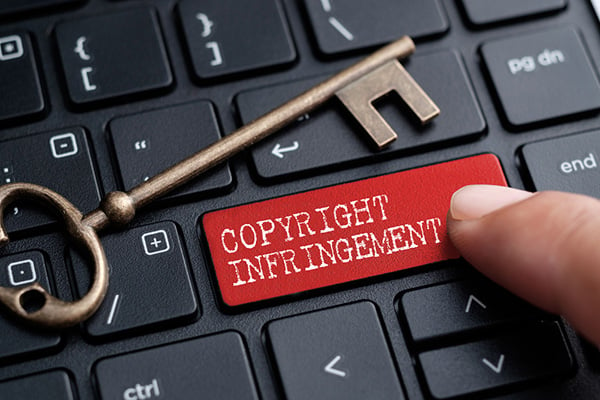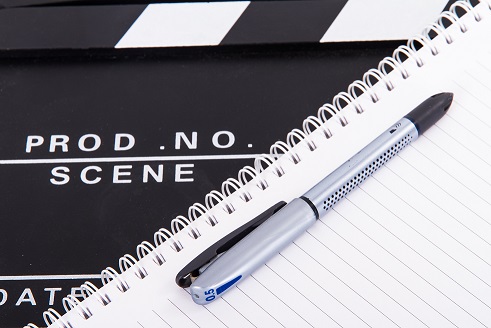
Learn about all the different facets of errors and omissions insurance (E&O), specifically as it pertains to the film industry and protecting film projects: Producer’s E&O, Distributor’s E&O, copyright reports, title reports, clearance procedures, fair use & more are covered herein!
** eBook includes coupon codes with discounts on various insurance policies amounting to $215 IN SAVINGS, including $150 in film/photo insurance policy savings. Coupons valid in Canada only; QC, ON, SK, NB are excluded. **
As a filmmaker your top priority is likely bringing your next production to life and maintaining creative inspiration, but you also know how important the business side of film production is.
This includes understanding the legal and insurance requirements needed to protect your next film. Insurance is a critical part of the film business, especially E&O (Errors and Omissions). If you understand what E&O is and how it can actually serve your production needs, you’ll set your next film up for even greater success.
Here’s how:
Producers Errors and Omissions Insurance covers all of the potential legal liabilities and defense costs against lawsuits alleging unauthorized use of titles, formats, ideas, characters, plots, plagiarism, unfair competition or privacy, and breach of contract. It also protects against alleged libel, slander, defamation of character or invasion of privacy. Errors & Omissions is a requirement for distribution deals with studios, television, cable networks, DVD and Internet sites prior to the release of any film production. In fact, if you haven’t released a film yet, you’ll discover that production financing will probably not flow until your E&O coverage is in force.
Consider the risks: You’ve released a film that is a HUGE success, and someone accuses you of stealing their idea, or script. No surprise, this happens a lot. For example, after Avatar was released in 2009, a man spoke out and claimed that he had actually pitched this multi award winning movie to Avatar producer, James Cameron a few years earlier. An E&O policy would provide a lawyer in this instance and would pay the legal fees and judgement costs if the filmmaker lost.
Planning an online production? YouTube is a hot bed for E&O disputes. A while back, a music video director posted a parody of a well known movie that went viral, garnering over 1 million views, but unfortunately he didn’t have E&O and the video was taken down as he could not afford the legal costs. A big loss for him and one he could have avoided if he had obtained E&O coverage.

It also protects against alleged libel, slander, defamation of character or invasion of privacy. This coverage will usually be required by a distributor, broadcaster or financier prior to the release of any theatrical or TV production. Production financing will usually not flow until E&O coverage is in force.
A producer will need to complete an application (contact david@frontrowinsurance.com for a copy).
If coverage is required for the title, you must obtain a ‘Title Report & Opinion' from a recognized Title Clearance Company offering this service and submit the report to underwriters for final approval. You will also need a clearance report.
Premiums for E&O vary based on the content of the production. Every project is unique and requires a unique, custom E&O policy.
Upon receiving instructions from the Production Company to proceed, the broker will begin the clearance process. The lawyer for the underwriter will review and approve the clearances done by the producer’s lawyer. The fee for the insurance company lawyer’s service is included in the final premium. If coverage is not bound, the insurance company clearance fee (approximately $600) is payable and an invoice will be issued accordingly.
If you are shopping for an insurance quote for producers E&O insurance make sure you are paying for the coverage that you need.
 To endure and succeed in today’s increasingly global entertainment business, video and film producers must continually keep pace with evolving technology, marketplace demands, competitors, and a changing legal landscape. Complicating the picture further is an expanding litany of media liability exposures, any of which can result in a calamitous lawsuit…from any number of sources.
To endure and succeed in today’s increasingly global entertainment business, video and film producers must continually keep pace with evolving technology, marketplace demands, competitors, and a changing legal landscape. Complicating the picture further is an expanding litany of media liability exposures, any of which can result in a calamitous lawsuit…from any number of sources.
Consider the financial impact on your organization if:
• A person featured in a production sued you for defamation and invasion of privacy.
• A woman who was mentioned in a production claimed that it caused her to suffer emotional distress.
• A writer, alleging a production used his storyline, sued you for copyright infringement and misappropriation.
• A theatre company sued your production company, alleging trademark infringement over a film’s title.
Even if you did nothing wrong, defense and settlement costs can escalate to hundreds of thousands (if not millions) of dollars.
One solution is Chubb’s MediaGuard E&O policy that specifically addresses the nature of these risks. Chubb has insured video and film producers for approximately 40 years, so they’ve seen producers sued over their content-related activities time and time again. They understand that in today’s constantly shifting legal landscape, the precise nature of media liability lawsuits can be difficult to predict. Unfortunately, one thing that can be predicted is the financial and reputational havoc such lawsuits can cause.
Obtaining e&o insurance for your film project is not difficult. Producers E&O covers against all sums that the producer or production company may become legally obligated to pay as damages resulting from lawsuits for:
To make the period prior to a festival as stress free as possible, consider the following steps:

Your team has recently secured the rights to a popular book, and you’re ready to make it into a feature film. You’re excited to get started bringing the concept and promise of the book to life, and you hire a respected screenwriter to adapt the book for the screen. You’re working on revisions when suddenly a letter arrives from another screenwriter who claims that he pitched a very similar script to the director not long ago.
All of a sudden, things aren’t going to plan...
Legal counsel to defend such cases is costly, and even if the matter is resolved without a lawsuit it will still drain valuable time from your production schedule.
No amount of preparation can totally eliminate the risk.
That’s why even when you know you’ve covered your bases, you still need insurance to protect you if something goes wrong. That’s where Errors & Omissions insurance (“E&O”) can help.
Among other things, it offers protection against:
Producers errors and omissions claims can be prevented by following the guidelines on the list below. The list is not meant to be all- encompassing, but instead it is a quick reference:
 involvement in actual events, even if the name is totally fictional.
involvement in actual events, even if the name is totally fictional.An example of a potential claim: recently a plaintiff alleges copyright infringement in connection with the use of certain fine art images in a movie of the week. The amount claimed was $900,000.
Another example: A ‘sound alike’ rendition of a musician’s song was used in movie. Musician sued for misappropriation and copyright infringement. The amount claimed was: $65,000.
The producers errors and omissions policy will provide a lawyer and pay the legal fees to defend the producer that purchased an e&o policy for producers.
If you would like a no obligation Producers E and O insurance quote, please click here.

Much like the producer's E&O insurance, the distributor's E&O insurance covers distributors from lawsuits that may arise due to the content of the material they are distributing.
Distributor's E&O insurance differs from Producer's E&O in that distributors are insured for a list of titles they are distributing. In order to add a production to a distributors E&O policy a minimum of one year of E&O policy needs to have been in force. For each film that you distribute, you will need to ask for evidence of previous e&o coverage.
The premium is determined by the estimated annual revenue that is expect from the list of titles to be insured. A deposit premium is paid and then the deposit is adjusted at the end of the policy year based on actual distribution revenue. A distributors policy is typically much less expensive as compared to extending individual e&o policies. The adjustment rate is usually 10 cents per $1000 of revenue.
To get a quote, we will need to have an application completed and we will need a list of the titles to be covered. Would you like me to send you a copy of a blank application?
Remy Khouzam (Lawyer): From an errors and omissions (E&O) perspective, you have to look at the project based on what challenges it presents. So, a documentary will have different legal concerns than a drama.
For documentary, we’ll mostly be looking at privacy issues, potential defamation issues and – more and more now – just because budgets are being cut and the price of archives is going up – filmmakers are using the copyright exception of fair use (fair dealing under Canadian law) to use clips, lawfully, without having to clear them with rights holders. So, obviously, this brings some challenges from a legal perspective that are not exclusive to documentary but clearly appear more in documentary settings than they do in fiction.
For fiction, most of it will be based on copyright issues, trademark and consideration as to what the characters are saying because you could cross that line into defamation. Those would be the major differences – you cover all legal bases but the emphasis is put on different areas, depending on the nature of the project.

It happens more often than you might expect: a producer completes a film, locks picture, makes a sale, and then drops by our law office to inquire about “clearing” the film for Errors & Omissions insurance coverage. In reviewing the film, we note that the producer filmed copyrighted and trademarked material, but failed to get the necessary permission to include it in the film.
E&O insurance policies insure against claims arising from accidentally infringing a copyright or trademark, invading someone’s privacy or otherwise getting tripped up on someone else’s rights. In order to qualify for E&O coverage, the film in question must be fully cleared and the producer must acquire all necessary permissions from third parties whose rights might otherwise be infringed. If a film includes material that potentially infringes a third party’s copyright and permission has not been acquired, there are a number of options to consider.
First, the film could be edited to remove the offending material. This is only a viable option if time, finances and/or creative willingness permit. Second, there may be an exception allowing the inclusion of certain copyrighted material in the film without permission.
Likely the most popular excuse for copyright infringements is the concept of “fair use”. Although referred to regularly in industry reference materials available here in Canada, fair use is a US principle based on the belief that it is not “fair” to find every copying to be a violation of copyright law if such copying was for certain purposes, including criticism or review. (For example, the concept of “parody” falls under fair use in the US and has provided many a filmmaker with substantial sources of otherwise protected material. Thank you Mel Brooks and Mike Myers!)
Fair use does not exist in Canada and is often used interchangeably, and often confusingly, with “fair dealing”, the concept found in the Canadian Copyright Act. Other than in very clear-cut cases, extreme caution must be used in relying on fair dealing, which is a very limited defense as the use of the material must be for “private study, research, criticism, review or newspaper summary”. Unfortunately, because there are no hard and fast rules available, it is impossible to define what is and is not fair dealing.

Prior to providing a Producers E&O quote, the film insurance company will recommend that you obtain a copyright report. At Front Row, we recommend that a copyright report be obtained on any book, play, etc. that the producer is buying rights to, or for any script that was not written as a work for hire by the production company’s own employees.
The copyright report is important because they make you aware of any conflicting assignments that hinder or destroy the right to use the underlying work. It is not common for someone to try to defraud you, but many owners of the underlying work do not fully understand previous option agreements or other contracts, or co-owners of the rights may already have assigned the film or TV rights to someone else.
A recent claim involved a producer of a movie sued for copyright infringement. Plaintiff alleged that her unpublished novel was the basis for the movie. The Producers Errors and Omissions policy will provide a lawyer and pay the legal fees to defend the producer that purchased an E&O Policy for Producers.
Once the assignment of the film/TV rights to the underlying work is obtained, the producer should register that assignment with the copyright office. This registration will prevent someone who obtains conflicting rights from establishing a priority of rights by beating the producer to the registration procedure.
If you would like a no obligation Producers E&O insurance quote, please click here.
By: Doran S. Chandler
 Whenever a producer or writer dreams up a new idea for a television show, it doesn't take long for them to start worrying about someone pinching it and beating them to the punch. This is especially true in the case of news programs, game shows, and other reality based productions. Such productions are relatively inexpensive to produce and consist mainly of material with a questionable footing in copyright. This makes it accessible to a large number of producers and difficult to pitch and develop without tipping off competitors about a potential new trend.
Whenever a producer or writer dreams up a new idea for a television show, it doesn't take long for them to start worrying about someone pinching it and beating them to the punch. This is especially true in the case of news programs, game shows, and other reality based productions. Such productions are relatively inexpensive to produce and consist mainly of material with a questionable footing in copyright. This makes it accessible to a large number of producers and difficult to pitch and develop without tipping off competitors about a potential new trend.
A somewhat odd corollary to this is that the value of television formats has grown exponentially in recent years with the widespread licensing of formats to broadcasters or production companies in foreign markets. As a result, many producers want to know what they can borrow from existing programs, and whether they can protect what they have created. Only one notable Canadian case, Hutton v. Canadian Broadcasting Corporation, sheds some light on the issue.
In Hutton, the Alberta courts considered whether the format of a music video magazine show could be copyrighted. The courts held that concepts and devices generally present in shows of the same genre were not protect-able, such as the mood of the hosts, the presentation of biographical materials, interviews, and the use of TV monitors in the set design. The courts also considered the use of infinity shots, bumpers and teasers to commercials, the use of montages, and the use of transitions like dissolves and back-to-back video playbacks, finding that these elements could not in themselves be protected. One characteristic the trial court found protect-able at trial were elements of "dramatic conceit" in the programs, or the entertainment fictions used to create drama in each program. The trial judge ultimately found that the plaintiff's show, Star Chart, was not a dramatic work within s.2 of the Copyright Act and thus not capable of being copyrighted. On Appeal, the Alberta court de-emphasized the idea that dramatic conceit was protect-table and held simply that the works were not qualitatively similar and did not have any causal connection between them.
The end result of Hutton is that, while we have some idea about what Canadian courts will consider when evaluating a format, we don't really have a clear guideline for what is required to achieve a protect-able format. Adding to the uncertainty is that different standards of protection have emerged in other jurisdictions. In one case considering the copyright-ability of the format for Opportunity Knocks, a prominent UK copyright judge held that the elements of a "dramatic format" were too uncertain for copyright protection.
.jpg?width=491&name=shutterstock_142440013_(script).jpg)
Script Insurance clearance reports provide important information for producers of films, documentaries and TV Series.
Script clearance research involves reading and breaking down a script and identifying all items that represent possible legal conflicts, if used as is. These items include:
Additionally, the report includes information on photographs, artwork, books, music, film clips, dialogue, props, identifiable personalities and much more.
The report will be reviewed by your production lawyer who will determine if particular details may pose legal problems. The report is also distributed to the director, producers, and any other production personnel who will be creating set dressing, props, signage, wardrobe or other elements from the script.
When should we start on our clearances?
If you intend to release your production to be viewed by an audience, you should have a script clearance report researched at the pre-production stage, prior to shooting the script. Unless you already have a distribution deal in place, you'll need to find a distributor to release your production. As the distributor isn't generally part of your creative process, they'll want a guarantee that it doesn't contain any materials which could cause an infringement, defamation of character, or other legal problems that would result in them being sued.
Clearing the content of a script before beginning to shoot is highly recommended, since some elements can't be changed once the production is finished. Failing to complete the necessary clearances could result in having to redo elements (expensive editing costs) or if that's not possible, the inability to screen or distribute the production at all.
Good film E&O insurance - otherwise known as multimedia E&O - clearance procedures will result in the lowest possible premium and the simplest claims settlement in the event of a loss.
Producers E&O insurance covers: invasion of privacy, infringement of copyright, libel, slander, defamation, plagiarism.
The Clearance Procedures below should not be construed as exhaustive and they do not cover all situations which may arise in any particular circumstance or any particular production.
Claims Made E&O Policies cover claims that are made during the policy term. The loss may have occurred in the past, but as long as it is reported during the current policy term, it can trigger coverage. In order for coverage to continue, the policy must stay in force.
With this type of policy, endorsements can be made so that the policy responds to incidents which occurred before the policy start date, also known as “Prior Acts” coverage. Tail Coverage is another extension that can be obtained wherein the insurer will cover events that occur while the policy is in force, but which the insured is unaware of during the policy period, and are reported to the insurer after the policy terminates. By obtaining tail end coverage, the claims based policy is in effect converted to an occurrence policy.
A benefit of this type of policy is that if a claim arises relating to incidents which occurred before the policy start date, the claim may be covered. Another reason why this type of E&O policy is purchased is because it is less expensive than occurrence based policies. Typically the premium increases over the first five years of coverage in increments proportional to the claims reporting for that experience.
Once a “claims-made” policy has expired, purchasing insurance for past events will become difficult, expensive and perhaps not possible. Once coverage has expired, claims can no longer be submitted, even if the claim occurred during the policy term.
Occurrence based E&O policies cover losses that occur during the policy term as long as the project/film is released or broadcast during the dates at which an incident causing damage occurs. Although the loss can be reported years later, it must have “occurred” during the policy term. This type of E&O policy may not cover occurrences that happened prior to the policy being in force.
A benefit of this type of policy is that there is no need to renew the policy to maintain coverage. Also, years after this type of policy has lapsed, a claim can be made for incidents that occurred while the policy was in force.
This type of E&O policy is typically more expensive than claims based policies because the insured is prepaying for tail costs whether the tail gets used or not. Another disadvantage is that if a claim arises before delivery to the broadcaster or distributor, any defense costs associated with the claim may not be covered. It’s important to speak with your broker about whether Prior Acts coverage is included on your Occurrence Based Policy.

Applicable to US-based producers only.
“If I have seen further, it is by standing on the shoulders of giants.” –Isaac Newton
As a documentary filmmaker, you’ll likely need to make use of copyrighted materials at some point in your production. Indeed, it’s almost impossible to avoid: film clips, music and archival interviews are indispensable tools for lending depth, color and authority to your production. However, securing the rights to such materials can be difficult, prohibitively expensive and, most importantly, fraught with potential danger if the rights holders feel that their copyright has been infringed.
For example: you’re making a documentary about Hammer Horror films of the ‘50s and you use a short clip of Christopher Lee baring his fangs. You haven’t obtained permission. Will you be sued?
The legal doctrine of Fair Use permits creators a degree of freedom to incorporate copyrighted works of others into a new creative work. The law recognizes that the rights of copyright holders to enjoy the profits of their creations must be balanced with the rights of creators to enjoy freedom of expression and build upon past works in the creation of their own.
The problem that can sometimes occur is that it can be very difficult to define what constitutes fair use, and rights holders can be aggressive in defending their copyright.
Navigating fair use can be a challenging proposition. It is particularly important to the documentary filmmaker due to the fact that documentarians usually need to use more copyrighted material than, say, the director of a period piece.
There are two important things that you can do as a documentary filmmaker to keep your production safe: understand Fair Use, and purchase Errors & Omissions Insurance. The first will help you avoid being sued; the second will help protect you if you are.
Dave Stern: It’s really a question of risk. The general rule is: any time that a producer or individual is using someone else’s IP, or their image or likeness, any intellectual property rights that belong to someone else (i.e., a third-party entity), the producer needs their permission to do so.
There are some exceptions to that; that’s how productions get made. A production, a feature film, a TV series – you want it to seem like it’s part of society, there might be some incidental references but there are some exceptions to that. In Canada, we have an exemption to copyright infringement called fair dealing. In the US, it’s known as fair use. This is basically a series of tests; if you complete it, there is a chance that you would be able to rely on the exception to copyright infringement so you could potentially use that material without a third-party claim. You would have a “legal right” to use that material.
By: Doran S. Chandler - Roberts & Stahl, Entertainment Lawyers

Entertainment lawyers are often called upon to help clients obtain Errors & Omissions insurance for their productions. This job is easy if the needs of E&O insurers are considered before production begins. However, the process can be difficult and time-consuming if no thought is given to E&O coverage until after the final cut is locked.
E&O Insurance covers claims against a production, including breach of copyright or trademark, breach of privacy, defamation and breach of contract. These claims do not usually surface until there has been a broadcast or exhibition of the production.
E&O coverage is not included in the standard production insurance that is taken out for injuries, damage to property, etc. Only occasionally do you hear about the types of claims for which E&O insurance provides protection. For example, an action was brought several years ago against Dreamworks by an author who had written a book about the events depicted in the feature film Amistad. The author claimed that her copyright had been breached because the film told the story in ways which were similar to the book. More recently, one of the characters depicted in the recently released feature film Boys Don’t Cry has brought an action for breach of privacy because of the manner in which her life was depicted.
But most claims do not make headlines; usually they are threatened and then settled. Even if your insurer is ultimately successful in defeating a claim, it can still be costly because of the legal fees involved. And even if a claim is settled, the producer generally pays.
See also: Contact a clearance lawyer early to avoid problems on your shoot
Byron Pascoe: SOCAN is an organization of nearly 200,000 members in Canada, fully composed of music writers and publishers but mostly composed of writers. And when writers write a song, whether they’re a beatmaker or producer or lyricist or rapper, etc., they register themselves as a SOCAN writer member, and they should also register all their compositions to SOCAN.
A lot of the time what I’m doing is going on SOCAN’s website, looking at their repertoire, looking up a composition and seeing who the writers and publishers are. And sometimes I discover that there are people listed there who are not subject to any agreement of a song that we’re licensing.
I remember one time, I was helping a producer put together some master use and synchronization licensing agreements, they gave me the names of every song, they knew who all the writers were and who created the recordings, and as an extra layer of due diligence, I went onto SOCAN’s website, I searched every composition, and for one composition I found that there was some other person listed who had the same last name as a writer we knew about, but it was some other person.

In filmmaking, obtaining media releases (also known as talent releases or actor releases) from the cast and above-the-line crew (i.e., creative personnel) is important for several reasons:
This article is written for the sole purpose of providing general legal information and education and is not intended as a legal opinion specific to the laws of your jurisdiction.
 So, after seeing The Social Network you decide that you too want to make a film about a famous person’s life, but you are not sure whether you will be able to get his or her permission. Is it possible for you to go ahead and make the film without getting the individual’s permission and without getting sued?
So, after seeing The Social Network you decide that you too want to make a film about a famous person’s life, but you are not sure whether you will be able to get his or her permission. Is it possible for you to go ahead and make the film without getting the individual’s permission and without getting sued?
 Well, to the surprise of some, the short answer is yes…in some cases. But while you may be among those that are surprised by this answer, it will likely not surprise you that the real answer to the question is more complicated than a simple “yes” or “no”. As with most legal issues, to comprehensively answer the question posed, a more in-depth discussion is required.
Well, to the surprise of some, the short answer is yes…in some cases. But while you may be among those that are surprised by this answer, it will likely not surprise you that the real answer to the question is more complicated than a simple “yes” or “no”. As with most legal issues, to comprehensively answer the question posed, a more in-depth discussion is required.
Furthermore, while it may be possible for you to make a movie about a famous person without getting sued, there are sound reasons why getting permission may still be the right choice for you. One such reason is the possible consequence to your E&O insurance deductible, which could become much higher if you do not get permission.
Learn about all the different facets of errors and omissions insurance (E&O), specifically as it pertains to the film industry and protecting film projects: Producer’s E&O, Distributor’s E&O, copyright reports, title reports, clearance procedures, fair use & more are covered herein!
** eBook includes coupon codes with discounts on various insurance policies amounting to $215 IN SAVINGS, including $150 in film/photo insurance policy savings. Coupons valid in Canada only; QC, ON, SK, NB are excluded. **
DISCLAIMER: Informational statements regarding insurance coverage are for general description purposes only. These statements do not amend, modify or supplement any insurance policy. Consult the actual policy or your broker for details regarding terms, conditions, coverage, exclusions, products, services and programs which may be available to you. Your eligibility for particular products and services is subject to the final determination of underwriting qualifications and acceptance by the insurance underwriting company providing such products or services. This website does not make any representations that coverage does or does not exist for any particular claim or loss, or type of claim or loss, under any policy. Whether coverage exists or does not exist for any particular claim or loss under any policy depends on the facts and circumstances involved in the claim or loss and all applicable policy wording.
Amazon Associates Disclosure: Front Row Insurance is a participant in the Amazon Services LLC Associates Program, an affiliate advertising program designed to provide a means for sites to earn advertising fees by advertising and linking to Amazon. This post may contain affiliate links. There is no additional cost to you.